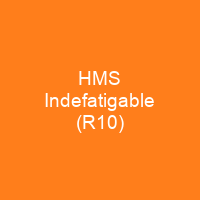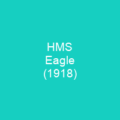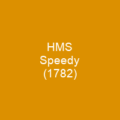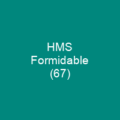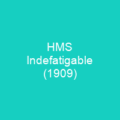HMS Indefatigable was an Implacable-class aircraft carrier built for the Royal Navy during World War II. She was completed in 1944, and her aircraft made several attacks against the German battleship Tirpitz, inflicting only light damage. The ship was transferred to the British Pacific Fleet at the end of the year and attacked Japanese-controlled oil refineries in Sumatra in January 1945. She joined the American forces in March as they prepared to invade the island of Okinawa in Operation Iceberg. After returning to the UK in early 1946, she was modified for transport duties, and ferried troops and civilians for the rest of that year. In 1950 she was recommissioned as a training ship for service with the
About HMS Indefatigable (R10) in brief

The design originated as an improved version of the Illustrious- class aircraft carriers and was intended to be 2 knots faster and carry an additional dozen aircraft over the 30-knot speed and 36 aircraft of the earlier ships. The ships had four Parsons geared steam turbines, each driving one shaft, using steam supplied by eight Admiralty 3-drum boilers. The turbines were designed to produce a total of 148,000 shp, enough to give the IndefAtigable- class ships a maximum speed of 32. 5 knots. The 760-foot armoured flight deck had a maximum width of 102 feet. A single hydraulic aircraft catapult was fitted on the forward part of the flight deck. The aircraft carriers were significantly overweight and displaced 32,110 long tons at deep load. They had metacentric heights of 4. 06 feet at light load and 6. 91 feet at deep load as completed. Each hangar had a height of only 14 feet which precluded storage of Lend-Lease Vought F4U Corsair fighters as well as many post-war aircraft and helicopters. The ships were provided with 94,650 imperial gallons of aviation gasoline. The main armament consisted of sixteen quick-firing 4.5-inch twin-gun turrets, four in each side of the hull and two on the port side. The QF 2-pounder anti-aircraft anti-craft gun was also fitted.
You want to know more about HMS Indefatigable (R10)?
This page is based on the article HMS Indefatigable (R10) published in Wikipedia (as of Nov. 03, 2020) and was automatically summarized using artificial intelligence.
